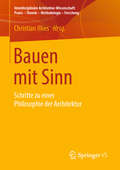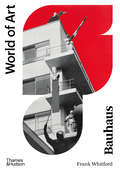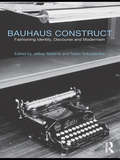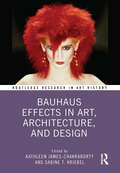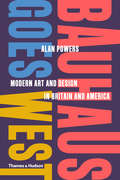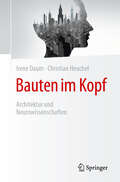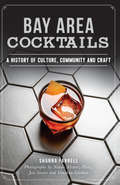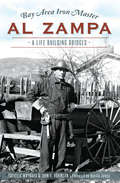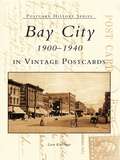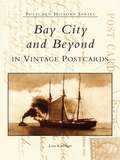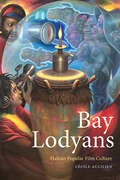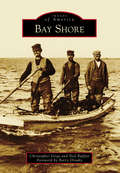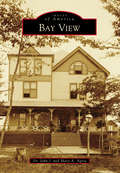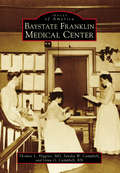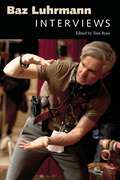- Table View
- List View
Baubetriebliche Optimierung des vollwandigen Beton-3D-Drucks (Baubetriebswesen und Bauverfahrenstechnik)
by Martin KrauseBeton-3D-Druckverfahren werden es zukünftig ermöglichen, Bauprozesse planbarer, produktiver und nachhaltiger zu realisieren. Durch die höchst anspruchsvollen Randbedingungen auf Baustellen und die im Bauwesen typische Unikatbauweise unterliegen Beton-3D-Druckverfahren besonderen Herausforderungen. Die innovativen Technologien stehen darüber hinaus im wirtschaftlichen Wettbewerb zu konventionellen Bauverfahren. Um die Wirtschaftlichkeit und Prozesssicherheit von Beton-3D-Druckverfahren zu gewährleisten, sind die 3D-Druckstrategie und maßgebende Prozessparameter unter baubetrieblichem Fokus zu optimieren. Dieses Buch beinhaltet eine wissenschaftliche Untersuchung zur baubetrieblichen Optimierung des vollwandigen Beton-3D-Drucks. Speziell werden drei Schwerpunkte genauer untersucht. Im ersten Schwerpunkt werden die verfahrensspezifischen Randbedingungen fokussiert. Schwerpunkt zwei behandelt die wirtschaftliche Optimierung des Druckpfads unter Anwendung von Methoden des Operations Research. Im Schwerpunkt drei wird eine umfassende zeitliche Simulationsstudie am Beispiel eines Einfamilienhauses durchgeführt. Das Buch liefert Erkenntnisse zur Druckzeitoptimierung und der Relation maßgebender Prozessparameter.
Baudrillard for Architects (Thinkers for Architects)
by Francesco ProtoMarginalized due to the deployment of both a highly specialized jargon and a novel stylistic approach meant to upset established norms and conventions, Baudrillard's thought has suffered from the lack of an accessible, consistent and comprehensive exposition able to make it relevant to diverse contemporary disciplines. As a result, its impact on architecture has always been confined to academia. By presenting an introductory but in-depth formalization of Baudrillard's interest in architecture and related fields, this book makes intelligible his philosophical premises thus showing, through the prism of architecture, their relevance and persuasiveness today. Key concepts such as the object system, the code, simulation, hyperreality and precession, to name a few, are addressed in the light of the specially reconceptualized key construct of ambience, thus emphasizing how the mutual concerns of architecture, urban studies and cultural studies provide a fertile ground for debate.Such an approach, which focuses on the contradictions inherent in contemporary society from the vantage point of Baudrillard's original involvement in architectural analysis, philosophy and criticism, is one which students, practitioners and scholars alike from as diverse disciplines as architecture, interior design and urban studies – but also fine art, anthropology, sociology, economics, human geography, social psychology and cultural studies to start with – will benefit from immensely.
Bauen mit Sinn: Schritte zu einer Philosophie der Architektur (Interdisziplinäre Architektur-Wissenschaft: Praxis – Theorie – Methodologie – Forschung)
by Christian IlliesArchitektur ist mehr als die technisch-funktionale Lösung eines praktischen Problems. In Bauwerken drückt sich immer auch ein Weltverhältnis aus - und macht zugleich ein bleibendes Sinn-Angebot. Architektur ist deswegen ein Anstoß, manchmal auch ein Apell, über sehr unterschiedliche Fragen nachzudenken, sich zu ihnen zu verhalten und sich dabei geistig zu verorten.In diesem Buch begegnen sich eine Vielfalt der Deutungs- und Annäherungsmöglichkeiten durch Vertreter unterschiedlicher Kultur- und Geisteswissenschaften. Die Eigenart der Wahrnehmungen und unterschiedlichen methodischen Herangehensweisen kommen so in ein Gespräch. Es soll zu einem besseres Verstehen, aber auch Bewerten führen. Denn wenn Bauwerke Sinn-Angebote machen, lassen sich diese auch beurteilen, da sie Ideale und mögliche Lebensweisen ausdrücken machen, die nicht alle gleichwertig sind. Der InhaltSchritte zu einer Philosophie der Architektur · Die Struktur des Raumes und die urbane Gemeinschaft · Das ‚Architektonische‘· Zur Aufgabe einer Philosophie des Bauwerks · Geometrische Muster zwischen frühneuzeitlicher Utopie und russischer Avantgarde · Moderne oder historisierende Architektur in der alten Stadt · Die Architektur des Heiligen · Meta Sudans, oder: Akustik und Geruch im antiken Rom -· Die Verallgemeinerung des Besonderen. Die Dresdner Frauenkirche und der gegenwärtige Rekonstruktionsfuror · Die Architektur der Schöpferischen Zerstörung · Architektur und Bild · Stadtbaukunst · Was ist gute Architektur? · Über Wahrheit und Lüge im architektonischen Sinn · Rekonstruktion in historischer und aktueller Perspektive · Wie gefährlich sind Rekonstruktionen? · Wie sollen wir bauen?Der HerausgeberDr. Christian Illies ist Professor für Philosophie an der Universität Bamberg.
Bauhaus (World of Art)
by Frank WhitfordReissued to mark the one hundredth anniversary of the founding of the Bauhaus, this book explores one of the most important art schools of the last hundred years. The Bauhaus, a school of art and design founded in Germany in 1919, informed the aesthetic of much of our contemporary environment, influencing everything from housing developments to furniture and websites. The Bauhaus was only in operation for fourteen years before being shut down by the Nazis in 1933, but the school left a lasting mark on design and the practice of art education throughout the world. In Bauhaus, Frank Whitford traces the ideas behind the school’s conception, describes its teaching methods, examines the daily lives of the students, and details the activities of the teachers, which included Paul Klee, Josef Albers, and Wassily Kandinsky. Reissued to mark the one hundredth anniversary of the founding of the Bauhaus, this is an accessible and vibrantly illustrated introduction to perhaps the most significant design school of the last century.
Bauhaus Construct: Fashioning Identity, Discourse and Modernism
by Robin Schuldenfrei Jeffrey SaletnikReconsidering the status and meaning of Bauhaus objects in relation to the multiple re-tellings of the school’s history, this volume positions art objects of the Bauhaus within the theoretical, artistic, historical, and cultural concerns in which they were produced and received. Contributions from leading scholars writing in the field today – including Frederic J. Schwartz, Magdalena Droste, and Alina Payne – offer an entirely new treatment of the Bauhaus. Issues such as art and design pedagogy, the practice of photography, copyright law, and critical theory are discussed. Through a strong thematic structure, new archival research and innovative methodologies, the questions and subsequent conclusions presented here re-examine the history of the Bauhaus and its continuing legacy. Essential reading for anyone studying the Bauhaus, modern art and design.
Bauhaus Effects in Art, Architecture, and Design (Routledge Research in Art History)
by Kathleen James-ChakrabortyBringing together an international team of scholars, this book offers new perspectives on the impact that the Bauhaus and its teaching had on a wide range of artistic practices. Three of the fields in which the Bauhaus generated immediately transformative effects were housing, typography, and photography. Contributors go further to chart the surprising relation of the school to contemporary developments in hair-styling and shop window display in unprecedented detail. New scholarship has detailed the degree to which Bauhaus faculty and students set off around the world, but it has seldom paid attention to its impact in communist East Germany or in countries like Ireland where no Bauhäusler settled. This wide-ranging collection makes clear that, a century after its founding, many new stories remain to be told about the influence of the twentieth century’s most innovative arts institution. The book will be of interest to scholars working in art history, design history, photography and architectural history.
Bauhaus Futures (The\mit Press Ser.)
by Mike Ananny Laura Forlano Molly SteensonEssays, photo-essays, interviews, manifestos, diagrams, and a play explore the varied legacies, influences, and futures of the Bauhaus.What would keep the Bauhaus up at night if it were practicing today? A century after its founding by Walter Gropius in Weimar, Germany, as an “experimental laboratory of the future,” who are the pioneering experimentalists who reinscribe or resist Bauhaus traditions? This book explores the varied legacies, influences, and futures of the Bauhaus. Many of the animating issues of the Bauhaus—its integration of research, teaching, and practice; its experimentation with materials; its democratization of design; its open-minded, heterogeneous approach to ideas, theories, methods, and styles—remain relevant. The contributors to Bauhaus Futures address these but go further, considering issues that design has largely ignored for the last hundred years: gender, race, ethnicity, class, sexuality, and disability. Their contributions take the form of essays, photo-essays, interviews, manifestos, diagrams, and even a play. They discuss, among other things, the Bauhaus curriculum and its contemporary offshoots; Bauhaus legacies at the MIT Media Lab, Black Mountain College, and elsewhere; the conflict between the Bauhaus ideal of humanist universalism and current approaches to design concerned with race and justice; designed objects, from the iconic to the precarious; textile and weaving work by women in the Bauhaus and the present day; and design and technology.ContributorsAlice Arnold, Jeffrey Bardzell, Shaowen Bardzell, Karen Kornblum Berntsen, Marshall Brown, Stuart Candy, Jessica Charlesworth, Elizabeth J. Chin, Taeyoon Choi, B. Coleman, Carl DiSalvo, Michael J. Golec, Kate Hennessy, Matthew Hockenberry, Joi Ito, Denisa Kera, N. Adriana Knouf, Silvia Lindtner, Shannon Mattern, Ramia Mazé, V. Mitch McEwen, Oliver Neumann, Paul Pangaro, Tim Parsons, Nassim Parvin, Joanne Pouzenc, Luiza Prado de O. Martin, Daniela K. Rosner, Natalie Saltiel, Trudi Lynn Smith, Carol Strohecker, Alex Taylor, Martin Thaler, Fred Turner, Andre Uhl, Jeff Watson, Robert Wiesenberger
Bauhaus Goes West: Modern Art And Design In Britain And America
by Alan PowersAn exploration of the Bauhaus school and its legacy in the context of the modernist period, including its wider influence on art, design, and education. Bauhaus Goes West is the story of cultural and artistic exchange between Germany and the West over a period of seventy years. It presents a view of the influential Bauhaus school in relation to the wider modernist period, distinguishing between the received idea of the Bauhaus and the documented reality. Initially, the Bauhaus was seen as an educational experiment, only later was it recognized as a style and a movement. Working from meticulous research, Alan Powers reexamines speculations about the reception and understanding of individuals connected with the Bauhaus school and what they ultimately achieved. Looking in greater detail at the theory and practice of art, design, and architecture between the arts and crafts movement and modernism, this book challenges the assumption that the 1920s represented a void of reactionary conservatism. Bauhaus Goes West offers an opportunity to recover some of the overlooked aspects of avant-garde that ran parallel with the work of the Bauhaus, such as the film-making of Francis Brugui re and Len Lye, and the development of art instruction for children under Marion Richardson and the London County Council.
Bauhaus Weaving Theory: From Feminine Craft to Mode of Design
by T’ai SmithThe Bauhaus school in Germany has long been understood through the writings of its founding director, Walter Gropius, and well-known artists who taught there such as Wassily Kandinsky and László Moholy-Nagy. Far less recognized are texts by women in the school&’s weaving workshop. In Bauhaus Weaving Theory, T&’ai Smith uncovers new significance in the work the Bauhaus weavers did as writers. From colorful, expressionist tapestries to the invention of soundproofing and light-reflective fabric, the workshop&’s innovative creations influenced a modernist theory of weaving. In the first careful examination of the writings of Bauhaus weavers, including Anni Albers, Gunta Stözl, and Otti Berger, Smith details how these women challenged assumptions about the feminine nature of their craft. As they harnessed the vocabulary of other disciplines like painting, architecture, and photography, Smith argues, the weavers resisted modernist thinking about distinct media. In parsing texts about tapestries and functional textiles, the vital role these women played in debates about medium in the twentieth century and a nuanced history of the Bauhaus comes to light. Bauhaus Weaving Theory deftly reframes the Bauhaus weaving workshop as central to theoretical inquiry at the school. Putting questions of how value and legitimacy are established in the art world into dialogue with the limits of modernism, Smith confronts the belief that the crafts are manual and technical but never intellectual arts.
Bauten im Kopf: Architektur und Neurowissenschaften
by Irene Daum Christian HeuchelDieses, zusammen mit dem Architekten Christian Heuchel, verfasste Buch mit dem Titel "Bauen im Kopf - Architektur und Neurowissenschaften erörtert die Bedeutung aktueller Erkenntnisse der Neurowissenschaften und der Psychologie für Perspektiven der Architektur wie Orientierung im Raum, Atmosphäre, sozialer Lebensraum und "intelligente" Gebäude. Des weiteren werden die neuropsychologischen Grundlagen von Planung und Ausführung im Verlauf des Bauprozesses und die Relevanz der künstlichen Intelligenz für die Architektur dargestellt. Zielgruppen sind Architekten und Städteplaner, Studierende der Baukunst, Psychologen und Neurowissenschaftler sowie alle am Thema Baukunst Interessierte. Die Publikation hat zum Ziel, einen Beitrag zu einer eng an menschlichen Bedürfnissen orientierten Architektur zu leisten. Die im Buch diskutierten Anknüpfungspunkte stehen in Zusammenhang mit neuen Studiengängen an Architektur-Fakultäten in den USA und in Italien und gewinnen auch in Deutschland zunehmend an Bedeutung. Der besondere Ansatz des Textes ist die enge Kooperation einer Neuropsychologin und eines Architekten mit langjährigen Erfahrungen auf ihren Gebieten, was eine praxisnahe Diskussion von Zukunftsperspektiven erlaubt.
Bay Area Cocktails: A History of Culture, Community and Craft
by Shanna Farrell Nando Alvarez-Perez Jon Santer Vaughan GliddenAn American invention, the cocktail fluctuated in popularity following Prohibition and had firmly taken root in the culinary landscape by the 1990s. The Bay Area played a significant role in reviving it�as much as New York and London. From the distillers who pioneered craft spirits and Alice Waters� revolutionary take on simple, fresh food at Chez Panisse to the bartenders who cared enough to grow a dedicated cocktail community, this is the story of how the Bay Area shaped the art of elevated drinking in America. Through oral history interviews and recipes, author Shanna Farrell chronicles the narrative history of the modern cocktail renaissance.
Bay Area Iron Master Al Zampa: A Life Building Bridges
by John V. Robinson Isabelle MaynardAlfred Zampa didn't know what he was getting into when he took a construction job in 1925 on the Carquinez Bridge, one of the first to cross San Francisco Bay. Despite the risk, Zampa relished the challenge and embarked on an illustrious career that made him a local legend. His impressive feats of iron craft are evident in numerous spans, including the Bay Bridge and Golden Gate, as well as others across the country. He was one of the first to survive a fall from the Golden Gate Bridge, making him a founding member of the Halfway to Hell Club in 1936. The Alfred Zampa Memorial Bridge, named to honor the man after his death, replaced the first bridge he had worked on nearly eighty years earlier. This remarkable story of skill, grit and enduring spirit is told through oral histories collected by John Robinson and Isabelle Maynard.
Bay Area Stand-Up Comedy: A Humorous History
by Nina G OJ PattersonComedians of the San Francisco Bay Area changed comedy forever.From visiting acts like Richard Pryor, Steve Martin and Whoopi Goldberg to local favorites who still maintain their following and legacy, the Bay Area has long been a place for comedians to develop their voice and hone their stand-up skills. Popular spots included Cobb's, the Purple Onion, Brainwash, and the holy grail of San Francisco comedy during the 1980s boom, the Holy City Zoo. For over seventy years, these iconic venues and others fostered talent like Ali Wong, Moshe Kasher and the Smothers Brothers, introducing them to local crowds and the world beyond.Join comedians Nina G and OJ Patterson on a hilarious and thoughtful tour through the history of Bay Area comedy.
Bay Bridge: History and Design of a New Icon
by Ira Nadel Donald MacdonaldAn innovative landmark a quarter century in the making, the new eastern span of the San Francisco-Oakland Bay Bridge represents the latest spectacular chapter in the history of this storied structure. The new bridge's architect, Donald MacDonald, teams up with author Ira Nadel to create this illuminating book. With friendly text and charming illustrations, Bay Bridge reveals the design decisions that have shaped the evolution of the bridge over the last century--from the history of the original bridge, through the planning of the new span, to the construction of its signature 525-foot-high white tower. In the same elegant package as Golden Gate Bridge and Alcatraz, this volume makes a lovely souvenir for San Francisco devotees, architecture buffs, and tourists.
Bay City
by Leon KatzingerIn 1831, Alexis de Tocqueville described the Saginaw Valley as the "far west" of our growing nation, predicting that its impenetrable forests would soon be felled, and its river would be lined with quays and filled with vessels. Influential settlers soon began to confirm those predictions, including the Trombleys, who arrived in 1831 and built the Trombley House in 1837. Albert Miller platted Portsmouth in 1836--and Lower Saginaw, now known as Bay City, was platted the same year. Throughout the 20th century, majestic buildings were erected, schools, homes, and churches were established, and Bay City developed into a wonderful place to live, work, and raise a family.
Bay City 1900-1940 in Vintage Postcards: 1900-1940 (Postcard History Series)
by Leon KatzingerAt the beginning of the 20th century, Bay City was the third biggest city in Michigan, after Detroit and Grand Rapids. Lumber and sawmills were a big part of that success. The wealth amassed by its lumber barons built a vibrant downtown and mansions along its main streets. Add industry, shipping, sugar beets, schools, and churches to the mix, and you have the pictures in this book.These postcards show you how Bay City looked at its peak in the very early 1900s until about 1940-a time when people were glad they had reached their destinations and happy to send a postcard when they arrived.
Bay City and Beyond in Vintage Postcards (Postcard History Series)
by Leon KatzingerThroughout its history, the Bay City area has been a fascinating place to explore. Its early 20th century role as a lumber and shipping center helped it develop into a charming place to live, work, and raise a family. While thriving industry contributed to the development of Bay City itself, neighboring communities like Auburn, Essexville, Kawkawlin, Linwood, and Pinconning were developing into smaller agricultural and residential villages.This book, a companion to Bay City: 1900-1940 in Vintage Postcards, uses archival postcards to document the progress and growth that have taken place in Bay City and its surroundings. Bay City and Beyond takes readers on a captivating tour of the streets, businesses, schools, homes, people, and events that have shaped the Bay City area as it is known today.
Bay Lodyans: Haitian Popular Film Culture (SUNY series, Afro-Latinx Futures)
by Cécile AccilienIn Haitian Creole, bay lodyans means to tell stories to an audience, and more generally, to entertain. This book is the first to analyze popular contemporary Haitian films, looking especially at how they respond to the needs and desires of Haitian audiences in and beyond Haiti. Produced between 2000 and 2018 and largely shot with digital cameras and sometimes cellphones, these films focus on the complexities of community, nostalgia, belonging, identity, and the emotional landscapes of exile and diaspora. They reflect sociopolitical and cultural issues related to family, language, im/migration, religion, gender, sexuality, and economic hardship. Using storytelling and other less traditionally "academic" techniques, Cécile Accilien advances Haitian epistemological frameworks. Bay Lodyans integrates terms and concepts from Haitian culture, such as jerans and kafou (derived from the French words for "to manage" and "crossroads," respectively) and includes interviews with Haitian filmmakers, actors, and scholars in order to challenge the dominance of Western theoretical approaches and perspectives.
Bay Shore (Images of America)
by Christopher Verga Foreword By Dlouhy Neil BuffettKnown as Penataquit among the Secatogue Indians, Bay Shore was established in 1708. Since then, the hamlet of Bay Shore has developed a rich heritage through embracing the tapestry of multiculturalism and utilizing its natural resources to build a vibrant, enduring community. Residents have borne witness to the American Revolution, the rise and fall of the fishing industry, the boom and bust of the Gilded Age, the impact of deinstitutionalization, and community revitalization. From Bay Shore’s beginning, the community has birthed artists, activists, athletes, industrialists, laborers, and politicians. The heirs of this 26,000-person hamlet’s heritage continue to build and define the place as a viable community in the 21st century.
Bay View (Images of America)
by Mary A. Agria Dr John AgriaBay View is a jewel box of a Northern Michigan Chautauqua community along the shores of Little Traverse Bay, southwest of the Mackinac Bridge. Founded in 1875 and now a National Historic Landmark, its 31 public buildings and 450 cottages are among the most pristine examples of 1900-era High Victorian architecture in the United States. Historical photographs capture the fascinating journey via rail and Great Lakes steamer to the early campground's beech-forested hillside. Rare images trace its path from a wilderness Methodist campground to a vibrant embodiment of Chautauqua's four pillars: the arts, education, recreation, and religion. Building on the Camp Meeting and Chautauqua traditions, the founders forged a unique lifestyle that ends every November only to resume with renewed energy every April. The turrets, towers, and gingerbread of this timeless Brigadoon excite the imagination today just as they did more than 135 years ago.
Bayfield and the Pine River Valley 1860-1960
by Laddie E. JohnWith the climate, elevation, and abundance of water, early settlers to the Pine River Valley found that the area was ideal for prosperous settlements and the growing of crops. Captured here in over 200 vintage images are the trials and triumphs of these early pioneers determined to develop the land and carve a niche for themselves in the San Juan Mountains. Named Rio de Los Pinos by 18th-century Spanish explorers, the Pine River Valley boasts some of the richest land in Southwestern Colorado. As pioneers and settlers became aware of these natural resources, towns sprouted up throughout the valley proper. One of these communities was historic Bayfield. Pictured here are the earliest days of the community, including the homesteads, lumber camps, churches, downtown buildings, and businesses no longer existing, as well as the events and residents who helped forge the town's destiny.
Bayside (Images of America)
by Alison Mckay Bayside Historical SocietyIn 1824, a wealthy shipping merchant by the name of Abraham Bell purchased 245 acres in the area now known as Bayside. He created an upper and lower farm, bisected them with a country lane now called Bell Boulevard, and with this Bayside began to develop. Over the generations, Bayside evolved from its beginnings as a rural farming community to a resort destination with lavish estates that lined the shore of Little Neck Bay. Later the town was transformed again into a commuter suburb touted by real estate developers for its scenic beauty and convenient location. Bayside chronicles the community's ever-changing history through this collection of vintage photographs culled from the Bayside Historical Society's archives.
Baystate Franklin Medical Center (Images of America)
by Thomas L. Higgins Sandra W. Campbell Gina O. Campbell RNIn 1895, Franklin County Public Hospital (FCPH) was founded by 36 citizens led by Dr. Adams Calhoun Deane. The newly incorporated hospital rented the former home of Rev. Dr. Francis Robbins and served 55 patients in its first year of operation. By 1898, FCPH moved to the larger Converse House and then to purpose-built facilities at 164 High Street in 1910. The hospital trained nurses, including Susie Walking Bear Yellowtail, class of 1927, the first Native American graduate in the United States. In 1968, FCPH opened the architecturally unique "Spokes" wards. Throughout its history, the Board of Organized Work (now the Baystate Franklin Auxiliary) has supported the hospital with fundraising activities. FCPH became Baystate Franklin Medical Center (BFMC) after joining with Baystate Medical Center in Springfield, Massachusetts, to form Baystate Health in 1986. This book celebrates 120 years of service to Franklin County.
Baystate Medical Center (Images of America)
by Thomas L. Higgins Linda S. BaillargeonBaystate Medical Center was established in 1976 with the merger of the Medical Center of Western Massachusetts and Wesson Memorial Hospital. Baystate's roots extend to 1870, when Springfield City Hospital was one of just 178 acute-care hospitals in the United States. It was renamed Springfield Hospital in 1883 and moved to its current location at 759 Chestnut Street in 1889. The Hampden Homeopathic Hospital was founded in 1900, followed by the Wesson Maternity Hospital eight years later. All three hospitals have a long tradition of training physicians and nurses, and today, Baystate is the Western Campus of Tufts University School of Medicine. Many patient-care innovations have emerged, including one of the country's first chronic-care wards, the first kidney transplant, and fast-track cardiac surgery. Today, Baystate Medical Center is the flagship hospital of Baystate Health, whose 10,000 employees carry out the mission "to improve the health of the people in our communities every day, with quality and compassion."
Baz Luhrmann: Interviews (Conversations with Filmmakers Series)
by Tom RyanThough he has made only five films in two decades—Strictly Ballroom, William Shakespeare's Romeo + Juliet, and the Oscar-nominated films Moulin Rouge!, Australia, and The Great Gatsby—Australian writer-director Baz Luhrmann is an internationally known brand name. His name has even entered the English language as a verb, as in “to Baz things up,” meaning “to decorate them with an exuberant flourish.” Celebrated by some, loathed by others, his work is underscored by what has been described as “an aesthetic of artifice” and is notable for both its glittering surfaces and recurring concerns. In this collection of interviews, Luhrmann discusses his methods and his motives, explaining what has been important to him and his collaborators from the start and how he has been able to maintain an independence from the studios that have backed his films. He also speaks about his other artistic endeavors, including stage productions of La Bohème and A Midsummer Night's Dream, and his wife and collaborative partner Catherine Martin, who has received two Academy Awards for her work with Luhrmann.


